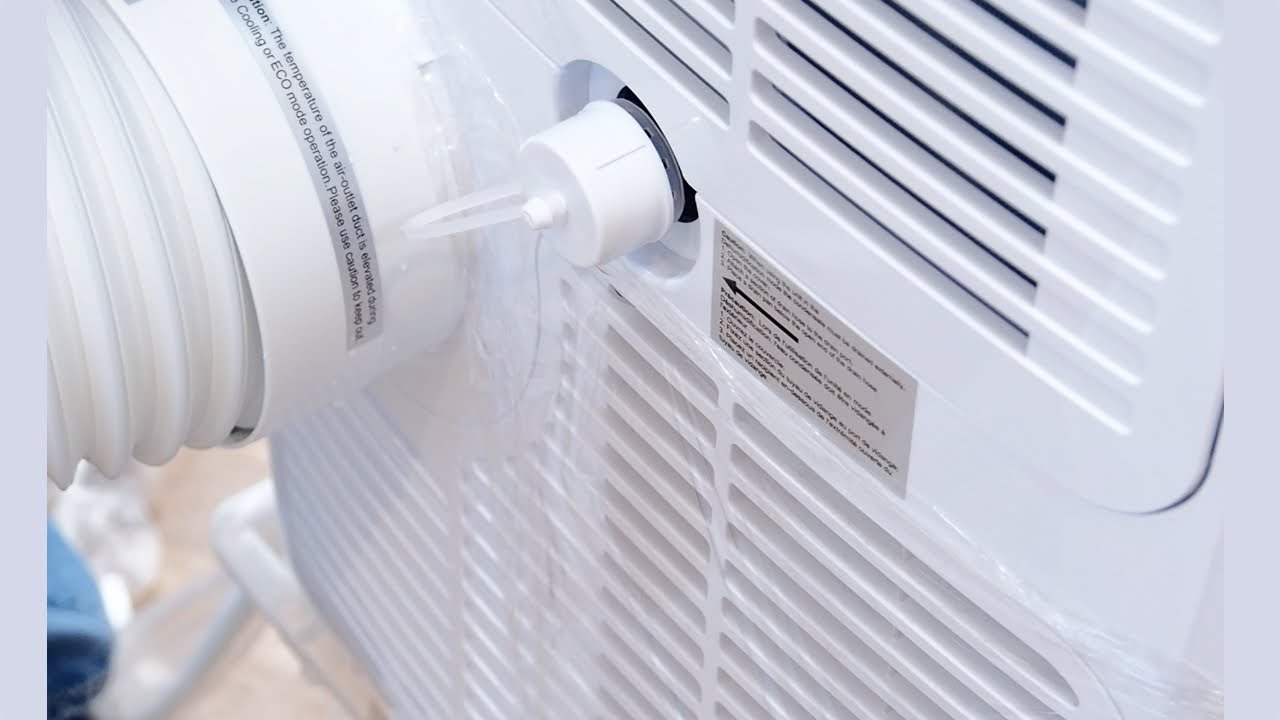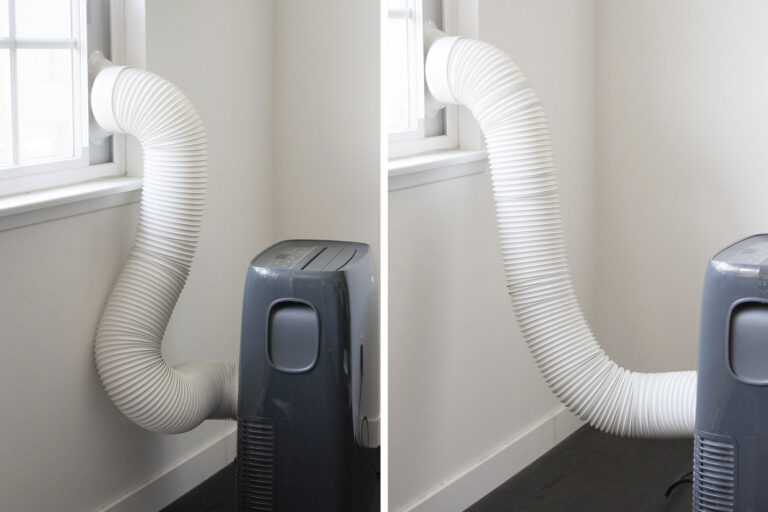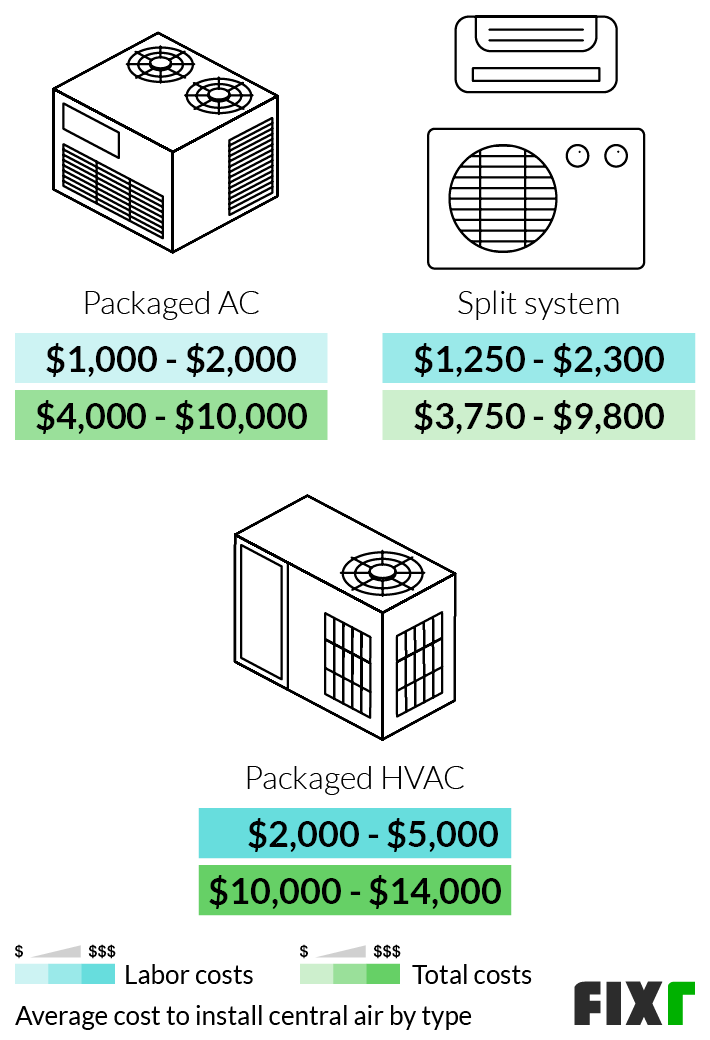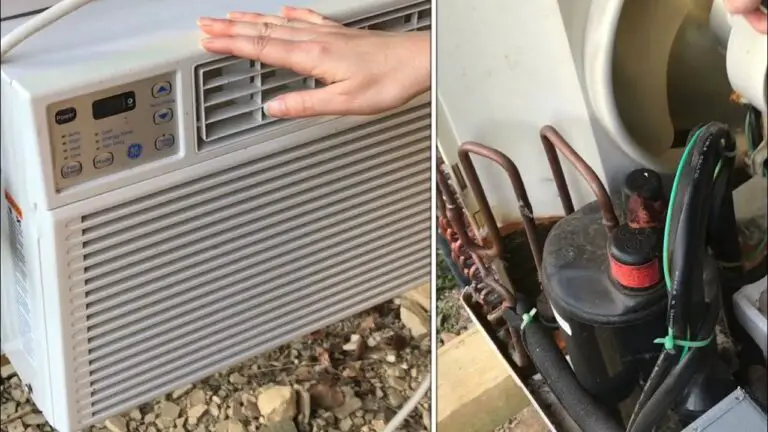Do You Have To Empty Water From A Portable Air Conditioner? Essential Tips
Yes, you need to empty water from a portable air conditioner. Frequency depends on the model and humidity levels.
Portable air conditioners cool your space and dehumidify the air. The dehumidification process generates water, which gets collected in an internal tank. Some models have a continuous drainage option, while others require manual emptying. High humidity levels may necessitate more frequent emptying.
Regular maintenance ensures optimal performance and prevents water overflow. Understanding your specific model’s requirements helps in efficiently managing water disposal. Proper handling of the water collection system enhances the air conditioner’s lifespan. Always refer to your unit’s manual for detailed instructions. This practice ensures a comfortable and hassle-free cooling experience during hot weather.
How Portable Air Conditioners Work
Portable air conditioners are popular for their flexibility and convenience. They cool rooms without the need for permanent installation. Understanding how these units work can help you maintain them better.
Cooling Mechanism
Portable air conditioners use a refrigeration cycle to cool the air. They draw in warm air from the room and pass it over cold evaporator coils. This process cools the air and removes heat from the room.
The cold air is then blown back into the room. The heat collected by the evaporator coils is transferred to the condenser coils. The condenser coils expel the heat outside through an exhaust hose.
Here’s a simple breakdown of the cooling process:
- Warm air enters the unit.
- Air passes over evaporator coils and cools down.
- Cool air returns to the room.
- Heat is expelled outside via the exhaust hose.
Moisture Collection
Portable air conditioners also manage humidity levels. As air cools, moisture condenses on the evaporator coils. This water needs to be collected and removed.
There are different methods for handling this moisture:
- Manual Drainage: Some units have a collection tank that needs emptying.
- Continuous Drainage: Others use a drain hose for continuous water removal.
- Self-Evaporating: Advanced models evaporate the water and expel it through the exhaust.
Regularly checking and emptying the water tank, if required, keeps the unit running efficiently. Here’s a quick comparison table:
| Moisture Handling Method | Pros | Cons |
|---|---|---|
| Manual Drainage | Easy to manage | Needs frequent emptying |
| Continuous Drainage | Less maintenance | Requires a nearby drain |
| Self-Evaporating | Minimal maintenance | Higher cost |
Knowing how your portable air conditioner handles moisture is crucial. It ensures efficient cooling and prevents water damage.

Credit: m.youtube.com
Why Water Accumulates
Understanding why water accumulates in your portable air conditioner helps maintain efficiency. The accumulation is a result of multiple processes, each playing a crucial role.
Humidity Factors
Humidity levels in your home affect how much water your air conditioner collects. Higher humidity means more moisture in the air. Your portable air conditioner removes this moisture, causing water to gather.
Using your air conditioner in a high-humidity area leads to quicker water buildup. Indoor activities like cooking or showering also increase humidity. This, in turn, escalates the amount of water collected by the unit.
Condensation Process
The condensation process is fundamental in cooling air. The air conditioner pulls warm air from your room. This warm air passes over cold coils inside the unit.
As the air cools, it loses its ability to hold moisture. This moisture condenses on the coils, turning into water droplets. These droplets then collect in the air conditioner’s reservoir.
Understanding this process helps in managing the water buildup effectively. Regularly emptying the reservoir ensures the unit functions optimally.
Signs Your Ac Needs Draining
A portable air conditioner can be a lifesaver during hot days. But, it needs regular maintenance. One crucial task is draining the water. Here are signs that your AC needs draining.
Overflow Indicators
Overflow indicators are the first sign your AC needs draining. Look for these signals:
- Puddles around the AC unit.
- The water tank is full.
- The AC shuts off unexpectedly.
If you see water leaking, it’s time to drain your AC. A full water tank can cause damage. It may also stop the AC from working.
Performance Issues
Water buildup can cause performance issues in your AC. Here are the signs:
- The AC blows warm air instead of cold.
- It takes longer to cool the room.
- There’s a strange noise coming from the unit.
These signs mean your AC is struggling. Draining the water can help it run smoothly again.
| Sign | Description |
|---|---|
| Puddles Around AC | Water leaks around the unit. |
| AC Shuts Off | The unit stops working unexpectedly. |
| Warm Air | The AC blows warm air instead of cold. |
| Strange Noise | There is an unusual noise from the unit. |
Methods To Drain Water
Portable air conditioners are convenient, but they do produce water. This water needs to be drained to ensure optimal performance. There are different methods to drain the water, each with its own benefits. Let’s explore some common methods to drain water from a portable air conditioner.
Manual Draining
Manual draining is straightforward. You need to remove water from the unit manually.
- Turn off the air conditioner and unplug it.
- Locate the drain plug, usually at the back or bottom.
- Place a container under the drain plug.
- Remove the drain plug and let the water flow into the container.
- Once drained, replace the plug and restart the unit.
Important: Always ensure the unit is off and unplugged before draining. This method is simple but requires regular attention.
Continuous Drain Option
The continuous drain option is more convenient. It allows for automatic drainage.
You can set up a continuous drain by following these steps:
- Find the continuous drain port on your air conditioner.
- Attach a drain hose to the port.
- Direct the hose to a nearby drain or suitable location.
Advantages: No need to manually drain water. It provides consistent, hassle-free drainage.
Tip: Ensure the hose is directed properly to avoid water spillage.
| Method | Pros | Cons |
|---|---|---|
| Manual Draining | Easy to do, No extra setup | Requires regular attention |
| Continuous Drain Option | Automatic, No manual effort | Needs a nearby drain |
Choose the method that best suits your needs. Both methods ensure your portable air conditioner runs efficiently.
Tools You’ll Need
If you own a portable air conditioner, knowing how to empty the water is crucial. Proper maintenance ensures your unit runs efficiently. For this task, you’ll need the right tools. This section covers the essential equipment and safety gear required.
Essential Equipment
Before you start, gather the following essential equipment:
- Bucket or Container: To collect the water.
- Hose: For draining the water directly.
- Towel: To wipe up any spills.
Using a bucket or container helps avoid water mess. A hose makes the process easier if your unit has a drain outlet. A towel is handy for cleaning any spills.
Safety Gear
Safety is important when handling electrical appliances. Consider these safety gear items:
- Gloves: Protect your hands from sharp edges.
- Rubber Shoes: Prevent slipping on wet floors.
- Safety Glasses: Shield your eyes from splashes.
Wearing gloves keeps your hands safe. Rubber shoes ensure you don’t slip on wet surfaces. Safety glasses protect your eyes from any accidental splashes.

Credit: www.angi.com
Preventing Water Buildup
Portable air conditioners are handy and efficient. But they can collect water. Preventing water buildup is crucial. This keeps your unit running smoothly. Here are some tips to help.
Regular Maintenance
Regular maintenance is essential. Clean the filter every two weeks. A dirty filter can cause water buildup. Check the drain hose for clogs. Clogged hoses prevent proper drainage. Empty the water tank regularly. This avoids overflow and damage.
Humidity Control
High humidity levels can cause more water buildup. Use a dehumidifier in very humid areas. This helps reduce the moisture. Keep windows and doors closed. This keeps extra humidity out. Monitor the humidity levels with a hygrometer. Ideal indoor humidity is between 30-50%.
| Task | Frequency |
|---|---|
| Clean Filter | Every 2 weeks |
| Check Drain Hose | Monthly |
| Empty Water Tank | As needed |
- Use a dehumidifier in humid areas.
- Keep windows and doors closed.
- Monitor humidity levels with a hygrometer.
Troubleshooting Common Issues
Portable air conditioners are convenient, but they can have issues. Troubleshooting common problems ensures your unit works efficiently. Learn about some common issues and how to solve them.
Clogged Drainage
Clogged drainage is a frequent issue in portable air conditioners. This problem can cause water to build up inside the unit. Follow these steps to resolve this issue:
- Turn off and unplug the unit.
- Locate the drainage port, usually at the back or bottom.
- Use a thin wire or pipe cleaner to remove debris from the drainage hole.
- Ensure the drainage hose is clear and properly connected.
- Plug in and turn on the unit, checking for proper drainage.
If the drainage system remains clogged, consult the user manual or contact customer support.
Leaking Problems
Leaking issues can be frustrating and may lead to water damage. Identify the root cause to fix the problem effectively.
| Problem | Solution |
|---|---|
| Cracked Drain Pan | Replace the drain pan or apply a waterproof sealant. |
| Loose Hose Connection | Tighten the hose connections and check for leaks. |
| Full Water Tank | Empty the water tank regularly to prevent overflow. |
Check the user’s manual for specific guidance on addressing leaks. If the issue persists, professional help may be needed.
Benefits Of Regular Draining
Emptying the water from your portable air conditioner offers many benefits. This simple task can keep your unit running smoothly and extend its lifespan.
Enhanced Efficiency
Regular draining helps in maintaining the efficiency of your portable air conditioner. When water builds up, the unit must work harder to cool your room. This extra effort can lead to higher energy bills.
By draining the water, you allow the air conditioner to run more smoothly. This results in a more consistent cooling performance. Your room stays cool, and your unit doesn’t have to overwork.
Prolonged Lifespan
Emptying the water can also prolong the lifespan of your portable air conditioner. Water buildup can lead to mold and mildew, which can damage internal parts.
Regular draining prevents these issues, keeping the internal components clean. This reduces wear and tear, ensuring your air conditioner lasts longer.
Consider setting a regular schedule for draining. This simple maintenance step can save you money on repairs and replacements.
| Benefits | Description |
|---|---|
| Enhanced Efficiency | Reduces energy bills by maintaining smooth operation. |
| Prolonged Lifespan | Prevents mold and mildew, protecting internal components. |
- Maintain efficiency
- Save on energy bills
- Extend unit lifespan
- Check the water tank regularly.
- Set a reminder to drain the water.
- Clean the unit periodically.

Credit: www.reddit.com
Frequently Asked Questions
What Happens If You Don’t Drain Your Portable Air Conditioner?
Not draining your portable air conditioner can cause water damage, mold growth, and decreased efficiency. Regular drainage is crucial.
How Do You Drain Water From A Portable Air Conditioner?
To drain water from a portable air conditioner, locate the drain plug. Place a pan or bucket underneath. Remove the plug and let the water drain out. Reattach the plug securely. Repeat as needed.
How Often Should I Empty Water From My Portable Air Conditioner?
Empty the water from your portable air conditioner every 8 hours during high humidity. Check the manual for specific guidelines.
Conclusion
Emptying the water from your portable air conditioner ensures optimal performance. Regular maintenance prevents mold and keeps your air fresh. Knowing when and how to drain your unit can extend its lifespan. Keep your home cool and comfortable by staying informed about your portable air conditioner’s needs.





